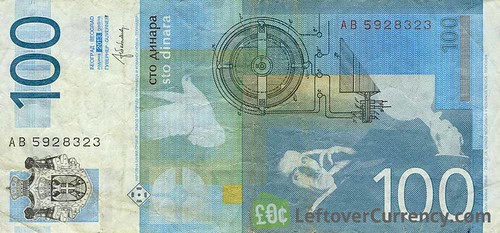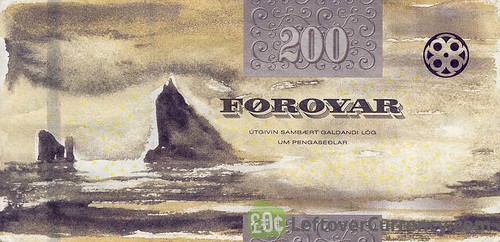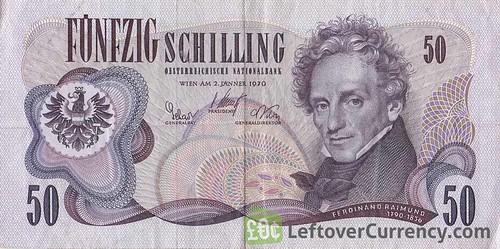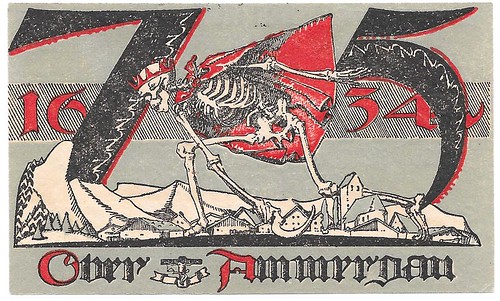
PREV ARTICLE
NEXT ARTICLE
FULL ISSUE
PREV FULL ISSUE
THE 10 SCARIEST BANKNOTES OF ALL TIMEFor Halloween Kavan Ratnatunga passed along this article on the "10 Scariest Banknotes of All Time". Thanks. Here's an excerpt - see the complete article online. -Editor #10: 100 Serbian Dinar banknote - Nikola Tesla's spooky pigeon
 Number 10 in the list of scariest banknotes: The 100 dinara banknote from Serbia. This note features the famous and mysterious inventor Nikola Tesla, who designed the first hydroelectric plant and became the inspiration for Elon Musk’s Tesla car brand. Tesla had an intense fondness for pigeons and was said to love pigeons more than people. Tesla’s favorite pigeon is pictured on the banknote’s back side. In his biography, Tesla told how, one night, his favorite pigeon flew in through the window and Tesla realised that she had something important to tell him: She was dying. Tesla describes the moment that will haunt him for the rest of his life: "There came a light from her eyes – powerful beams of light. Yes, it was a real light, a powerful, dazzling, blinding light, a light more intense than I had ever produced by the most powerful lamps in my laboratory". #8: 200 Faroese Kronur banknote - Tindhólmur ghost island
 This banknote of 200 kronur from the Faroer Islands (part of Denmark) features ghosts on both sides: On the front side is the image of a ghost moth: known for its ghostlike hovering display flight, slowly rising and falling, like a phantom. In folklore, ghost moths are believed to be the souls of the departed. Number eight on our list of scariest banknotes, the back side of the 200 Faroese Kronur note features the uninhabited islet of Tindhólmur. The small island has a local legend that explains why it became uninhabited: "A local farmer and his family used to live on the island. But one day everything changed. A huge eagle came and took the farmer’s two-year-old child and flew with it to the bird’s nest on the highest peak of the islet. The mother of the child hurried up to the peak but was too late. The young of the eagle had already eaten the eyes of the child. This peak is called ‘Ørnatindur’ meaning "Peak of the Eagle". The peak of the eagle is visible on the 200 kronur banknote: It’s the highest peak on the rocky island of Tindhólmur. The ghost island is open to visitors, but they are warned to keep their eyes peeled… #4: 50 Austrian Schilling banknote - A horrible way to die
 You may wonder what is so scary about the 50 Austrian Schilling banknote with the portrait of Ferdinand Raimund, actor and dramatist born in Vienna in 1790. We selected this bill as the 4th scariest banknote because of the horrible way this poor gentleman died. Aged 46, Ferdinand Raimund was bitten by a wild dog. Although the flesh wound was gory, it didn’t kill him. However, Raimund believed the dog to be rabid. Rabies is a horrible viral disease that causes extremely painful inflammation of the brain, violent movements and death within three months. Raimund decided to take matters into his own hands. He took a rifle and shot himself in the mouth. The bullet bounced off the inside of his skull and deflected, missing his brains. Ferdinand Raimund lived on for another 5 days, tormented by the painful gunshot wound in his head, after which he died from his injuries. After Raimund died it turned out the dog was not rabid. #2: 75 pfennig OberammerGau German Notgeld - Bubonic Plague
 German ‘Notgeld‘ is scary on its own already: During the 1920’s the German economy was in crisis and inflation was sky high. Many cities and towns started issuing their own ’emergency money’, ‘Notgeld’ in German. These banknotes, or in fact ‘vouchers’, were not backed by gold or deposits and they often lost their value shortly after they were issued. The design of these emergency banknotes often gives away that they were issued during times of economic and political crisis. Such as this banknote of 75 pfennig (3/4 mark) issued by the town of Oberammergau in the Bavarian Alps, featuring: Bubonic Plague… A giant Grim Reaper is featured mowing the town with a scythe. The year printed on the banknote, 1634, is when the bubonic plague death rate finally went down. The villagers vowed that if God spared them from the plague, they would produce a Passion Play every 10 years depicting the life and death of Jesus. The first Oberammergau Passion Play was performed in 1634 and it is still being performed in the present day, every 10 years, most recently in 2010. Jesus on the cross is depicted on the note as well, below the Grim Reaper, referring to the Passion Play performed in the town since it was saved from the Bubonic Plague. This grim Notgeld bill is number two in our list of scariest banknotes. To read the complete article, see:
Wayne Homren, Editor The Numismatic Bibliomania Society is a non-profit organization promoting numismatic literature. See our web site at coinbooks.org. To submit items for publication in The E-Sylum, write to the Editor at this address: whomren@gmail.com To subscribe go to: https://my.binhost.com/lists/listinfo/esylum All Rights Reserved. NBS Home Page Contact the NBS webmaster 
|